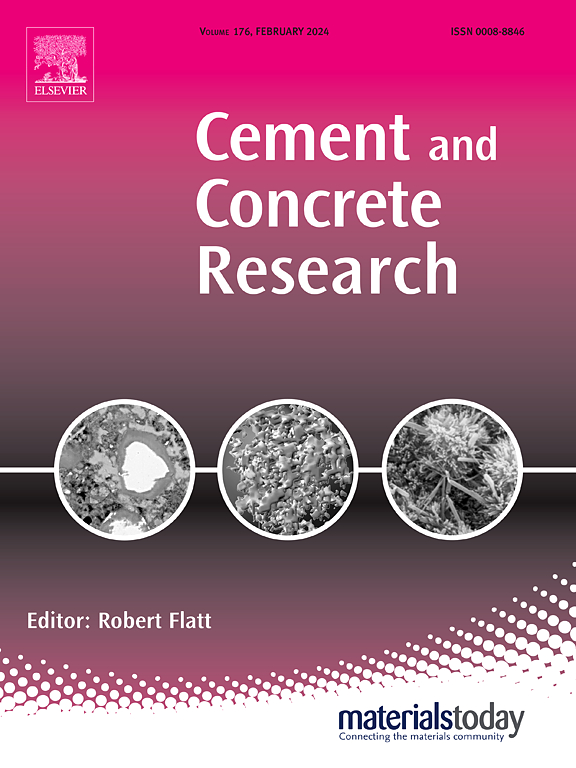The effect of pore structure on the pessimum effect of salt scaling: A perspective from cryogenic liquid transport and ice pressure
IF 13.1
1区 工程技术
Q1 CONSTRUCTION & BUILDING TECHNOLOGY
引用次数: 0
Abstract
Salt scaling damage peaks at a specific salt concentration, known as the pessimum concentration. However, reported pessimum concentrations vary widely, lacking a theoretical explanation. The microstructure of concrete is an important characteristic influencing the freezing behavior of pore solution, which is often neglected in salt scaling studies. This study investigates the effect of concrete microstructure on the pessimum concentration by review, experiment, and modeling. The results show that the pessimum concentration increases from 3 % to 7 % as the water-binder ratio decreases from 0.4 to 0.2. An ice content and cryosuction model considering the role of salt and pore structure is developed to establish the relationship between cryogenic liquid transport and damage. The analysis reveals that the cryogenic permeability, as affected by ice formation in the pore system, plays a crucial role in determining the pessimum concentration. A decrease in porosity and critical pore diameter reduces the cryogenic permeability, resulting in lower liquid absorption at low concentrations, and increasing the pessimum concentration.
孔隙结构对盐结垢消极效应的影响——来自低温液体输运和冰压的视角
盐结垢破坏在特定的盐浓度下达到峰值,称为负盐浓度。然而,报道的悲观浓度差异很大,缺乏理论解释。混凝土微观结构是影响孔隙溶液冻结行为的重要特征,但在盐结垢研究中往往被忽视。本研究通过回顾、实验和模拟等方法探讨了混凝土微观结构对悲观浓度的影响。结果表明,随着水胶比从0.4降低到0.2,溶液中负离子浓度从3%增加到7%;建立了考虑盐和孔隙结构作用的含冰量和低温吸力模型,建立了低温液体输运与损伤的关系。分析表明,低温渗透率受孔隙系统结冰的影响,是决定氮浓度的关键因素。孔隙度和临界孔径的降低降低了低温渗透率,导致低浓度下液体吸收率降低,从而增加了负离子浓度。
本文章由计算机程序翻译,如有差异,请以英文原文为准。
求助全文
约1分钟内获得全文
求助全文
来源期刊

Cement and Concrete Research
工程技术-材料科学:综合
CiteScore
20.90
自引率
12.30%
发文量
318
审稿时长
53 days
期刊介绍:
Cement and Concrete Research is dedicated to publishing top-notch research on the materials science and engineering of cement, cement composites, mortars, concrete, and related materials incorporating cement or other mineral binders. The journal prioritizes reporting significant findings in research on the properties and performance of cementitious materials. It also covers novel experimental techniques, the latest analytical and modeling methods, examination and diagnosis of actual cement and concrete structures, and the exploration of potential improvements in materials.
 求助内容:
求助内容: 应助结果提醒方式:
应助结果提醒方式:


